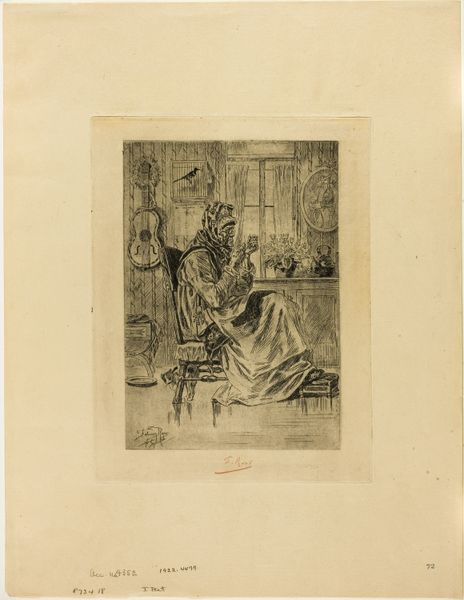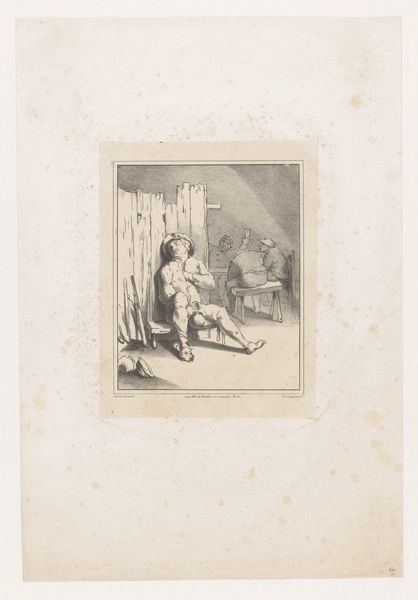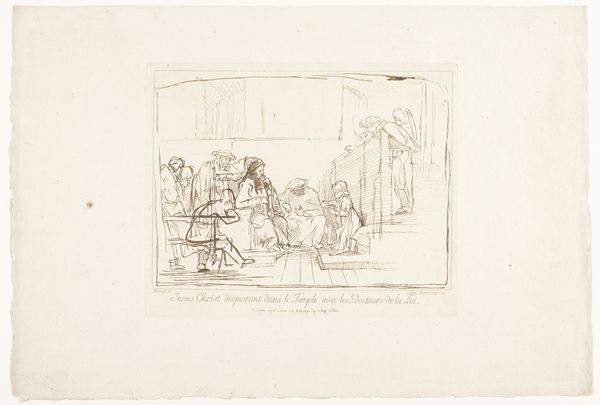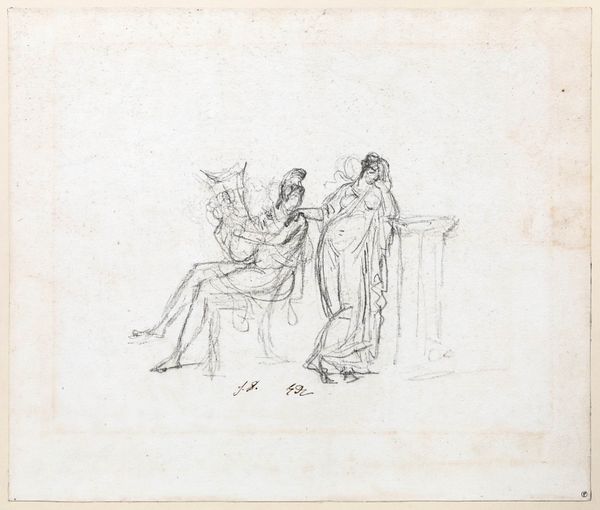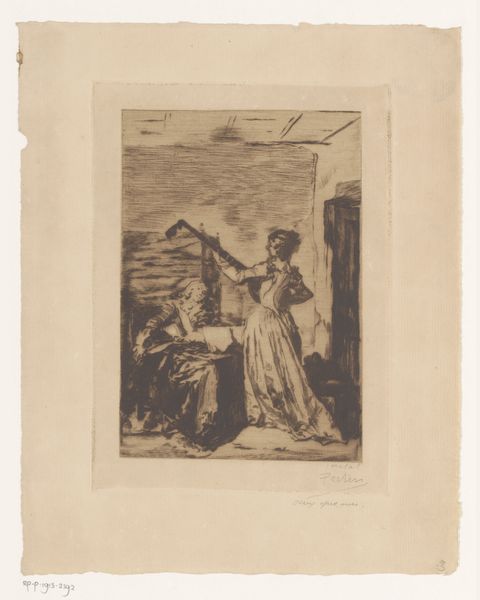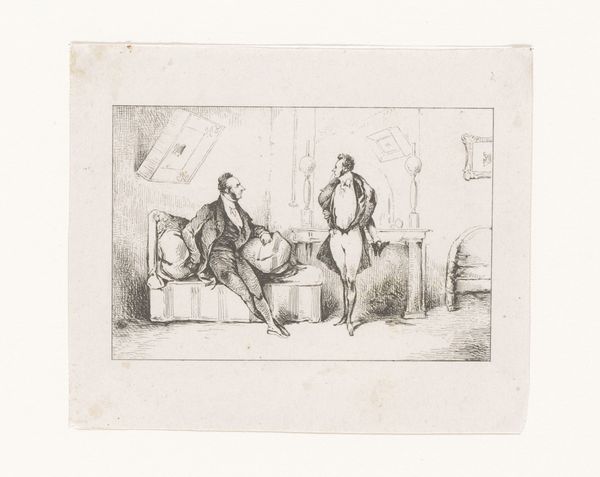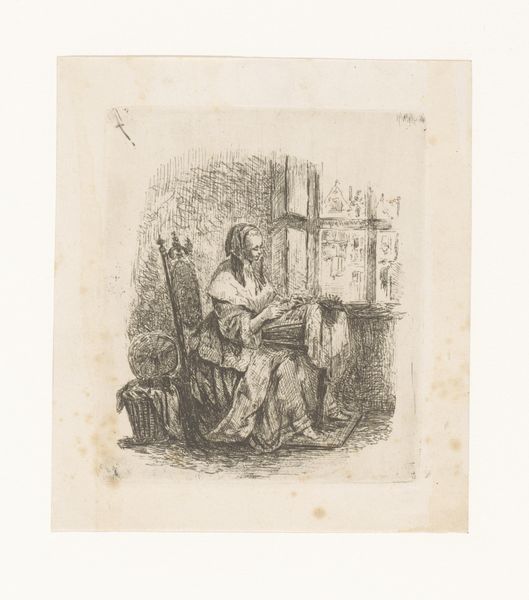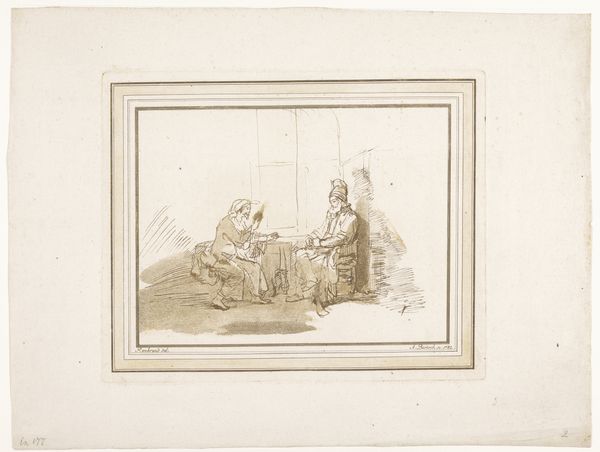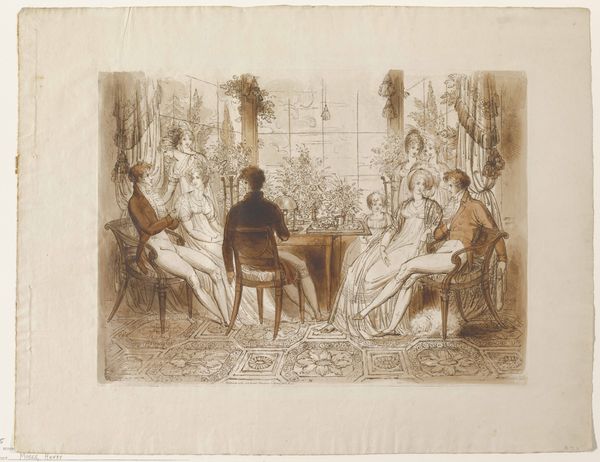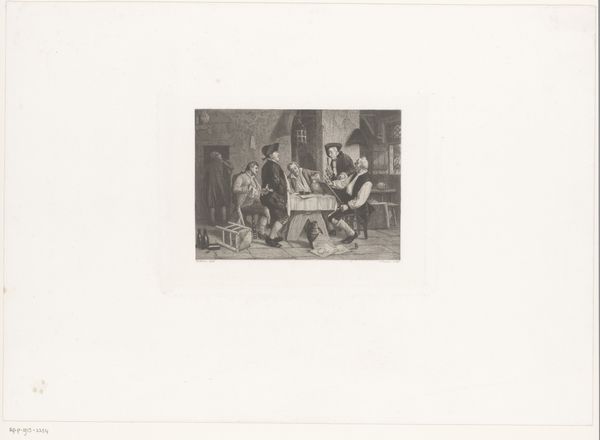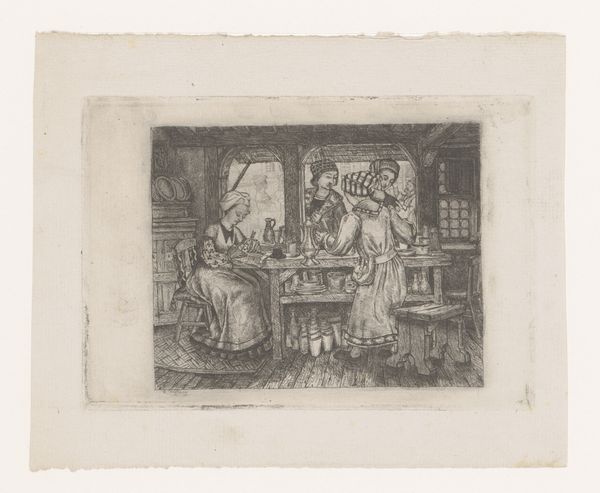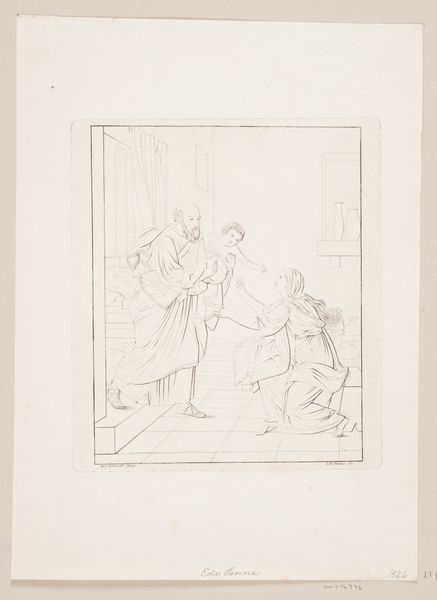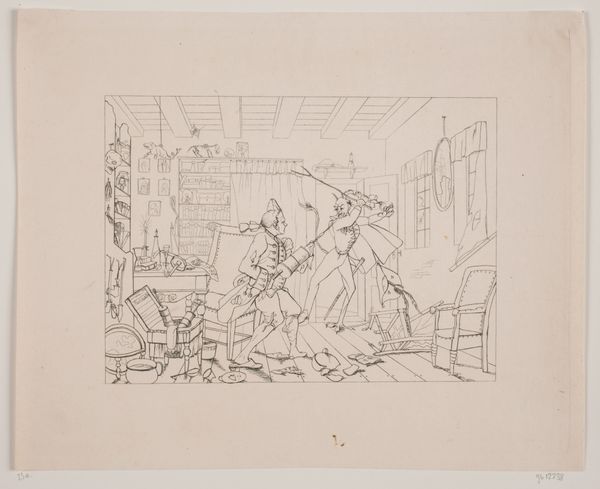
print, ink, woodcut, engraving
#
portrait
# print
#
figuration
#
ink
#
woodcut
#
line
#
genre-painting
#
engraving
Dimensions: 169 mm (height) x 162 mm (width) (bladmaal)
Editor: Here we have Andreas Flinch's "Illustration til Niels Ebbesens vise", made sometime between 1813 and 1872. It looks to be an engraving, with incredibly fine lines. It feels very formal and quite contained within this indoor setting. What compositional elements strike you the most in this piece? Curator: Immediately, it is the stark linearity that arrests the gaze. The artist’s almost obsessive adherence to line—defining form, shadow, and texture—invites an intense scrutiny of surface. Consider the parallel hatching behind the figures. Do they function as mere backdrop, or do they actively participate in structuring the visual space, compressing the figures, thereby adding psychological weight? Editor: That's interesting. The lines definitely seem to flatten the image, focusing attention on the two figures, the main subjects. Are there specific aspects of their forms that carry more visual weight? Curator: Precisely. The formal restraint redirects us towards the human element depicted, the tight and complex postures, which present a compelling study in compositional tension. Notice how their garments, though richly described in terms of linear detail, adhere closely to their bodies, reducing their volume and suggesting containment. Also, consider how their posture are echoing one another with the clasped hand in the middle forming the focal point in the engraving. Editor: So, you're saying the emphasis isn't just on *what* is depicted, but *how* it’s depicted – the tight, controlled lines adding to this feeling of repressed emotion and narrative constraint? Curator: Absolutely. This emphasis on formal qualities helps viewers perceive its deeper structure: balance, proportion, rhythm and the use of light and shadow to enhance depth and dimension. Editor: It’s fascinating how restricting the technique actually intensifies the impact. I had missed how their echoing each other emphasizes their relationship, thanks for explaining this formalistic approach! Curator: Indeed, appreciating how the visual composition elevates this work transforms our interpretation from an everyday print to an intentional narrative study.
Comments
No comments
Be the first to comment and join the conversation on the ultimate creative platform.
